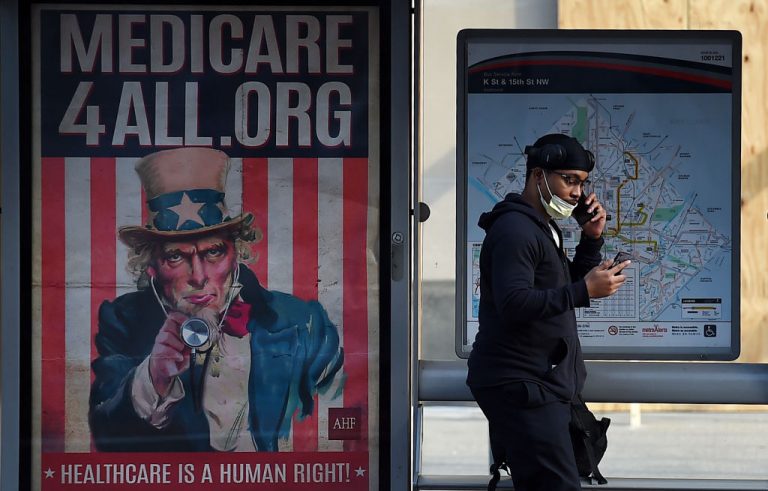A study of 20 million U.S. Medicare beneficiaries performed by a Department of Defense-backed artificial intelligence project revealed that 71 percent of COVID cases are fully vaccinated breakthroughs. The study also admitted that “Prior COVID-19 infection has a major protective effect against breakthrough hospitalization.”
The report is a weekly update dated Sept. 28 titled Effectiveness of mRNA COVID-19 Vaccines Against the Delta Variant Among 5.6M Medicare Beneficiaries 65 Years and Older and is published on the public-facing website of Humetrix, a data collection and artificial intelligence firm that works with the DOD and the Joint Artificial Intelligence Center (JAIC).
The weekly update, which is branded with the DOD, JAIC, and Project Salus logos, uses the following dataset:
- Cohort: 20 million Medicare beneficiaries; focusing on 16 million aged 65+;
- Exposure: 5.6 million fully vaccinated individuals (2.9 million Moderna & 2.7 million Pfizer);
- Period: January to August 21, 2021; and
- Key Metrics: 161,000 breakthrough infections and 33,000 breakthrough hospitalizations with 10,400 ICU admissions.
In a July 9 Trump administration-era article posted on the DOD’s website that boasted America’s artificial intelligence powers are greater than that of Communist China because the United States does not devote its energy to “spying on its own people and using facial recognition technology to identify political dissenters,” the article described Project Salus as “puts artificial intelligence to work helping to predict shortages for things like water, medicine and supplies used in the COVID fight.”
The article said Project Salus was developed by the National Guard and the U.S. Northern Command.
Success
You are now signed up for our newsletter
Success
Check your email to complete sign up
The PowerPoint for the presentation hosts the disclaimer, “Medicare data and Humetrix software are hosted in a secure government enclave of the Department of Defense.”
The study notably defined a breakthrough case as a COVID-19 diagnosis “occurring no earlier than 2-weeks post the second vaccine dose.” [emphasis added]
Humetrix defined a COVID-19 diagnosis as having occurred so long as the International Classification for Disease 10 code for COVID-19, U071, was found in any claim type, but disclaimed that only 29 percent of claims had either a PCR or antigen test.
Hospitalizations were defined as claims that have a “primary admitting diagnosis” of U071 and admission within 14 days of diagnosis. Deaths were defined as claims that had either a discharge code of 41, which the deck defines as “expired in facility,” or a date of death within 60 days of diagnosis.
Overall, of the 161,000 breakthrough infections, Humetrix found 2.1 percent, or approximately 3,400 people had passed away. For the purposes of assessing vaccine efficacy, the data compares itself against data from March to December of 2020 when the nationwide vaccination drive had yet to begin, finding that the 2.1 percent death figure had fallen by a factor of six from 12 percent pre-vaccine.
The same comparison also showed the hospitalization rate had fallen to 21 percent from 32 percent, but that ICU admissions had stayed flat at 32 percent versus 31 percent.
In examining the 16 million claims aged 65+, Humetrix found COVID-19 diagnoses increased by a factor of five as the Delta variant became prominent. Data estimated that 97 percent of all diagnoses were Delta variants by Aug. 28.
A graph in the deck showed that as Delta replaced vanilla SARS-CoV-2, this group suffered from as many as 40,000 new cases per week, up from 20,000 or less between April and July.
The report admitted that 71 percent of cases were breakthrough infections in fully vaccinated individuals and 60 percent of hospitalizations were fully vaccinated.
Humetrix also found that when Delta took over, Messenger RNA vaccine efficacy declined significantly over time. The breakthrough infection rate was almost twice as high 5 to 6 months after full vaccination compared to at the 3 to 4 month mark, with a similar statistic present for hospitalizations.
In examining the difference in infection rates between 65 to 74, 75 to 84, and 85+ year olds, the data showed that age only “has a minor contribution to the reduced vaccine protection.”
However, age appeared to play a significant role in the hospitalization rate. As Delta became prevalent, the 85+ group showed 50 percent more weekly hospitalizations per 100,000.
Data also appeared to show that the Moderna injection produces slightly less breakthrough cases when facing Delta than the Pfizer injection at the 5 to 6 month mark.
In the final slide, titled Risk Model for Breakthrough Hospitalization, Humetrix found that End Stage Renal Disease and prior hospitalization had the greatest odds ratio for serving as a hospitalization risk, followed by factors such as being native american, hispanic, black, morbidly obese, and male.
Notably, the group that had the lowest odds ratio for breakthrough hospitalization were those who had a prior COVID-19 diagnosis.
















